 W
WThe 1970 Lesotho coup d'état was a self-coup that took place in Lesotho on 30 January 1970, led by Prime Minister Leabua Jonathan. It led to the assumption of dictatorial powers by Prime Minister Jonathan, who held the office since 1965. The coup was triggered by the victory of the opposition Basutoland Congress Party over the ruling Basotholand National Party in the general election.
 W
WThe Angolan War of Independence, called in Angola the Luta Armada de Libertação Nacional, began as an uprising against forced cultivation of cotton, and it became a multi-faction struggle for the control of Portugal's overseas province of Angola among three nationalist movements and a separatist movement. The war ended when a leftist military coup in Lisbon in April 1974 overthrew Portugal's Estado Novo regime, and the new regime immediately stopped all military action in the African colonies, declaring its intention to grant them independence without delay.
 W
WThe Araguaia guerrilla was an armed movement in Brazil against its military dictatorship, active between 1967-1974 in the Araguaia river basin. It was founded by militants of the Communist Party of Brazil, the then Maoist counterpart to the Brazilian Communist Party (PCB), which aimed at establishing a rural stronghold from whence to wage a "people's war" against the Brazilian military dictatorship, which had been in power since the 1964 coup d'état. Its projected activities were based on the successful experiences led by the 26th of July Movement in the Cuban Revolution, and by the Communist Party of China during the Chinese Civil War.
 W
WBlack September, also known as the Jordanian Civil War was a conflict fought in the Hashemite Kingdom of Jordan between the Jordanian Armed Forces (JAF), under the leadership of King Hussein, and the Palestine Liberation Organisation (PLO), under the leadership of Yasser Arafat, primarily between 16 and 27 September 1970, with certain aspects of the conflict continuing until 17 July 1971.
 W
WThe Cambodian campaign was a brief series of military operations conducted in eastern Cambodia, which was officially a neutral country, in 1970 by South Vietnam and the United States as an extension of the Vietnam War and the Cambodian Civil War. Thirteen major operations were conducted by the Army of the Republic of Vietnam (ARVN) between 29 April and 22 July and by U.S. forces between 1 May and 30 June.
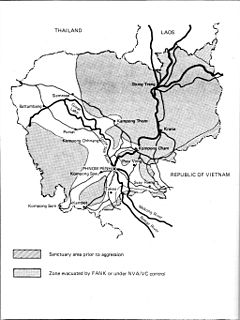 W
WOperation Chenla I or Chenla One was a major military operation conducted by the Khmer National Armed Forces (FANK) during the Cambodian Civil War. It began in late August 1970 and ended in February 1971, due to the FANK High Command's decision to withdraw some units from Tang Kauk to protect Phnom Penh after Pochentong airbase was attacked.
 W
WOperation Commando Hunt was a covert U.S. Seventh Air Force and U.S. Navy Task Force 77 aerial interdiction campaign that took place during the Vietnam War. The operation began on 15 November 1968 and ended on 29 March 1972. The objective of the campaign was to prevent the transit of People's Army of Vietnam (PAVN) personnel and supplies on the logistical corridor known as the Ho Chi Minh Trail that ran from the southwestern Democratic Republic of Vietnam through the southeastern portion of the Kingdom of Laos and into the Republic of Vietnam.
 W
WThe Communist insurgency in Malaysia, also known as the Second Malayan Emergency, was an armed conflict which occurred in Malaysia from 1968 to 1989, between the Malayan Communist Party (MCP) and Malaysian federal security forces.
 W
WThe Communist insurgency in Sarawak occurred in Malaysia from 1962 to 1990, and involved the North Kalimantan Communist Party and the Malaysian Government. It was one of the two Communist insurgencies to challenge the former British colony of Malaysia during the Cold War. As with the earlier Malayan Emergency (1948–1960), the Sarawak Communist insurgents were predominantly ethnic Chinese, who opposed to British rule over Sarawak and later opposed the merger of the state into the newly created Federation of Malaysia. The insurgency was triggered by the 1962 Brunei Revolt, which had been instigated by the left-wing Brunei People's Party in opposition to the proposed formation of Malaysia.
 W
WThe Guinea-Bissau War of Independence was an armed independence conflict that took place in Portuguese Guinea between 1963 and 1974. Fought between Portugal and the African Party for the Independence of Guinea and Cape Verde, an armed independence movement backed by Cuba and the Soviet Union, the war is commonly referred to as "Portugal's Vietnam" due to the large numbers of men and amounts of material expended in a long, mostly guerrilla war and the internal political turmoil it created in Portugal. The war ended when Portugal, after the Carnation Revolution of 1974, granted independence to Guinea-Bissau, followed by Cape Verde a year later.
 W
WThe Nigerian Civil War was a civil war in Nigeria fought between the government of Nigeria headed by General Yakubu Gowon and the secessionist state of Biafra led by late Lt. Colonel Odumegwu Ojukwu (1933–2011) from 6 July 1967 to 15 January 1970. Biafra represented nationalist aspirations of the Igbo people, whose leadership felt they could no longer coexist with the Northern-dominated federal government. The conflict resulted from political, economic, ethnic, cultural and religious tensions which preceded Britain's formal decolonization of Nigeria from 1960 to 1963. Immediate causes of the war in 1966 included ethno-religious violence and anti-Igbo progroms in Northern Nigeria, a military coup, a counter-coup and persecution of Igbo living in Northern Nigeria. Control over the lucrative oil production in the Niger Delta also played a vital strategic role.
Operation Gordian Knot was the largest and most expensive Portuguese military campaign in the Portuguese overseas province of Mozambique, East Africa. Carried out from 1970 to 1971, during the Portuguese Colonial War (1961–1974). The objectives of the campaign were to close down FRELIMO's infiltration routes across the Tanzanian border and to destroy permanent FRELIMO bases inside the liberated zones in Northern Mozambique. Gordian Knot was a seven-month long campaign ultimately employing thirty-five thousand men, and was almost successful since it destroyed most guerrilla camps located inside FRELIMO's liberated zones and captured large numbers of rebels and armaments, forcing FRELIMO to retreat from their bases and outposts in the provinces. The operation ultimately failed when FRELIMO forces regrouped and thrust further south into the province of Tete, opening a new front and overstretching the Portuguese Army. The failure of Gordian Knot helped fuel the discontent that led to the Carnation Revolution in April 1974.
 W
WOperation Green Sea was an amphibious attack on Conakry, the capital of Guinea, by between 350 and 420 Portuguese soldiers and Portuguese-led Guinean fighters in November 1970. The goals of the operation included the overthrow of Ahmed Sékou Touré's government, capture of the leader of the African Party for the Independence of Guinea and Cape Verde (PAIGC), Amílcar Cabral, destruction of the naval and air assets of the PAIGC and its Guinean supporters, and the rescue of Portuguese POWs held in Conakry.
 W
WOperation Ivory Coast was a mission conducted by United States Special Operations Forces and other American military elements to rescue U.S. prisoners of war during the Vietnam War. It was also the first joint military operation in United States history conducted under the direct control of the Chairman of the Joint Chiefs of Staff. The specially selected raiders extensively trained and rehearsed the operation at Eglin Air Force Base, Florida, while planning and intelligence gathering continued from 25 May to 20 November 1970.
 W
WOperation Menu was a covert United States Strategic Air Command (SAC) tactical bombing campaign conducted in eastern Cambodia from 18 March 1969 until 26 May 1970 as part of both the Vietnam War and the Cambodian Civil War. The targets of these attacks were sanctuaries and Base Areas of the People's Army of Vietnam and forces of the Viet Cong (VC), which utilized them for resupply, training, and resting between campaigns across the border in the Republic of Vietnam. The impact of the bombing campaign on the Khmer Rouge guerrillas, the PAVN, and Cambodian civilians in the bombed areas is disputed by historians.
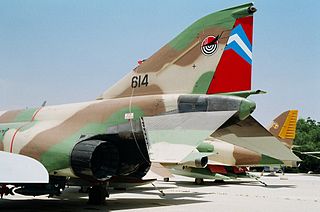 W
WThe Priha (Blossom) Operations were a series of strikes undertaken by the Israeli Air Force during the War of Attrition. Taking place between January and April 1970, the operations consisted of 118 sorties against targets in the Egyptian heartland. The strikes were carried out almost exclusively by the F-4 Phantom II, operated at the time only by the 201 "The One" Squadron and the 69 "Hammers" Squadron. Although tactically successful, the operations failed to achieve their objective of pushing the Egyptian government to sue for a ceasefire.
 W
WOperation Rhodes was an Israeli heliborne raid against the Egyptian island of Shadwan on 22 January 1970, during the War of Attrition. It was carried out by Israeli paratroopers and Shayetet 13 naval commandos, who took control of the island for over a day before leaving with 62 captured Egyptian soldiers and radar equipment.
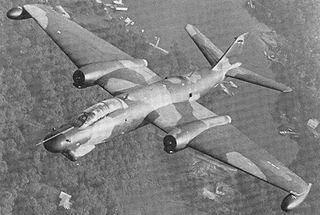 W
WOperation Shed Light was a crash development project in aerial warfare, initiated in 1966 by the United States Air Force to increase the ability to accurately strike at night or in adverse weather. During the 1960s the United States military worked hard to interdict the movement of men and materiel along the Ho Chi Minh trail. The North Vietnamese were experts in the use of weather and darkness to conceal their movement, and understanding the superiority of American air power put their skills immediately to good use. US forces seeking to impede the steady flow of supplies attempted to locate largely static targets during the day with poor results.
 W
WOperation Patio was a covert aerial interdiction effort conducted by the U.S. Seventh Air Force in Cambodia from 24 to 29 April 1970 during the Vietnam War. It served as a tactical adjunct to the heavier B-52 Stratofortress bombing missions being carried out in Operation Menu.
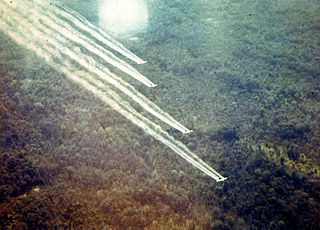 W
WOperation Ranch Hand was a U.S. military operation during the Vietnam War, lasting from 1962 until 1971. Largely inspired by the British use of 2,4,5-T and 2,4-D during the Malayan Emergency in the 1950s, it was part of the overall chemical warfare program during the war called "Operation Trail Dust". Ranch Hand involved spraying an estimated 20 million U.S. gallons (76,000 m3) of defoliants and herbicides over rural areas of South Vietnam in an attempt to deprive the Viet Cong of food and vegetation cover. Areas of Laos and Cambodia were also sprayed to a lesser extent. Nearly 20,000 sorties were flown between 1961 and 1971.
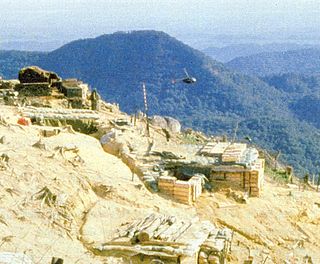 W
WThe Battle of Fire Support Base Ripcord was a 23-day battle between elements of the U.S. Army 101st Airborne Division and two reinforced divisions of the People's Army of Vietnam (PAVN) that took place from 1 to 23 July 1970. It was the last major confrontation between United States ground forces and the PAVN during the Vietnam War. Three Medals of Honor and six Distinguished Service Crosses were awarded to participants for actions during the operations.
 W
WThe Battle of St Matthew's or Battle of Short Strand was a gun battle that took place on the night of 27–28 June 1970 in Belfast, Northern Ireland. It was fought between the Provisional Irish Republican Army (IRA) and Ulster loyalists in the area around St Matthew's Roman Catholic church. This lies at the edge of the Short Strand, a Catholic enclave in a mainly-Protestant part of the city. Violence had erupted there, and in other parts of Belfast, following marches by the Orange Order. The battle lasted about five hours and ended at dawn when loyalists withdrew. The British Army and police were deployed nearby but did not intervene. Three people were killed and at least 26 wounded in the fighting, while another three were killed in north Belfast.
 W
WOperation Tailwind was a covert incursion by a small unit of United States Army and allied Montagnard forces into southeastern Laos during the Vietnam War, conducted between 11–14 September 1970. Its purpose was to create a diversion for a Royal Lao Army offensive and to exert pressure on the occupation forces of the People's Army of Vietnam (PAVN). A company-sized element of US Army Special Forces and Montagnard commando of the Military Assistance Command, Vietnam Studies and Observations Group conducted the operation.
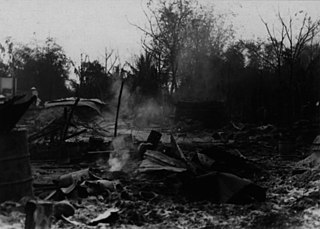 W
WThe Thanh My Massacre was a massacre of South Vietnamese civilians committed by the Viet Cong (VC) during the Vietnam War, in Thanh My hamlet, Phu Thanh village, Quảng Nam Province, South Vietnam on 11 June 1970. The hamlet, which was pro-government and defended by US Marines and South Vietnamese militia, was attacked by the VC in the early morning of 11 June. Under cover of a mortar barrage VC sappers set fire to houses and killed civilians either by shooting to throwing explosives into their shelters. The Marines and South Vietnamese forces engaged with the VC and called in artillery support. By 03:15 the VC began to withdraw and the Marines reoccupied the village and began evacuating the wounded.
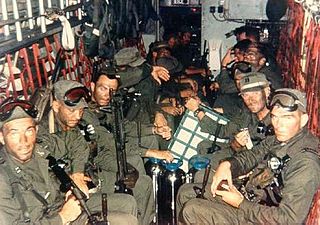 W
W W
WThe War of Attrition involved fighting between Israel and Egypt, Jordan, PLO and their allies from 1967 to 1970.
 W
WThe Zemla Intifada is the name used to refer to disturbances of June 17, 1970, which culminated in a massacre by Spanish Legion forces in the Zemla district of El Aaiun, Spanish Sahara.